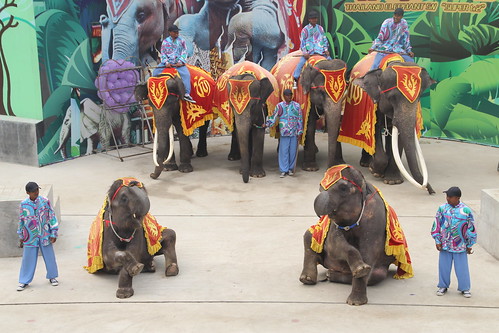How an elephant carer’s death could have been avoided
16 March 2016
Elephants ruled by the bullhook can eventually snap and kill. Why must captors insist on cruelty when more humane methods could save their own lives asks Dave Neale, Animals Asia’s Animal Welfare Director.
Earlier this month a man in China was needlessly killed due to a practice which has already caused multiple deaths across the world despite the fact that an alternative practice is freely available and promoted, which would prevent such deaths.
The man in question was Mr Wu, a husbandry manager at Beijing Badaling Safari park. His mistake was to follow the advice of his employees to carry out the free-contact practice which sees elephant keepers in zoos across the world entering the same space as the elephants that they manage.
In most cases this is made possible due to a perceived human dominance of an animal which is a gentle giant but will always have the ability to kill a human carer with little effort.
The human dominance traditionally comes from the use of the bullhook, an instrument which is used to maintain the trainer in a socially dominant position, and in some situations it is used to mete out physical punishment. No matter how gently the bullhook may be used, at some point it has to cause pain in order to be effective. Enough pain that the animal remembers, and seeks to avoid that experience again.
The bullhook removes an elephant’s choice and control over its immediate environment and actions, forcing it to comply with the wishes of the keeper regardless of whether or not the action it is being asked to perform is in the best interest of the elephant.
Whilst the bullhook will work 99% of the time, a metal rod or a spike cannot overpower a 3 -5 ton unhappy, frustrated animal, that for whatever reason is having a bad day. On such a day an elephant may wish to take out some of this frustration on the person they see as most to blame.
We regularly hear of a captive elephant going "rogue" and killing its mahout or a circus elephant, "breaking free" from its chains and attacking members of the public, but these incidents remain comparatively rare compared to the number of elephants abused each day.
The sad part of this story is that these deaths are avoidable, while sadly we are not going to see an end to the use of elephants in tourism activities and circus shows in Asia for some time, the way in which elephants are being managed in zoos internationally is changing and changing for the better for both animal keepers and elephants.
Captive elephants must now be managed under a "protected contact" management system. A system that uses positive reinforcement training, training by providing animals with rewards, as the primary method to modify their behavior. Protected contact management means that the trainers function outside of the elephant social hierarchy and do not attempt to establish a position of social dominance.
With such a system, physical punishment of individuals is no longer needed, resulting in elephants not emotionally impacted by the control that the free-contact system enforces upon them while keeper safety is achieved by keeper and elephant not sharing the same space.
The change in management of elephants in zoos is slow but where it is happening we are seeing improved safety for the keepers and improved welfare for the individual elephants.
The Badaling case means that Mr Wu is the most recent victim of a system that is broken and in desperate need of being fixed. The problem is that this fix will take a long time to implement and in the meantime it will cause the death of many more people who are simply following instructions without the knowledge that they are putting themselves at severe personal risk each and every day.
Better still, true respect for the elephant would be to understand that they should be living in the wild.
BACK








 Healing the hidden wounds
Healing the hidden wounds
 Early summer awakening at the China Bear Rescue Centre
Early summer awakening at the China Bear Rescue Centre
 5 reasons the dog meat trade must end
5 reasons the dog meat trade must end